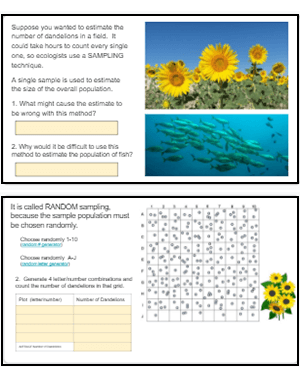
Population growth studies are a common element to studies in ecology in my basic biology class. Students learn about exponential and logistic growth the impacts populations have on the environment.
As part of this unit, I have had students simulate techniques used to estimate the size of a populations. I have toys packed in bags for students to capture and then mark and then recapture. They apply data to an equation to estimate the size of the population.
To set up this Mark and Recapture lesson, I have purchased and collected small items to pack in bags so that each bag is different. The students actually have fun playing with the toys in the process, so I try to find interesting samples. Garage sales are a great resource!
In addition to this activity, students simulate a random sampling exercise where they count flowers in a field on a grid. With these two lessons, they can make comparisons about the accuracy and limitations of each technique.
With the Pandemic of 2020, I had to modify this lesson. Students cannot share materials and many of them are learning from home. This year, I combined the two activities so students can complete it in one class period (1 hour).
First, students open the Google Slides (Presentation) and I go over them in class (or on Meet). Then, students fill the slides in as we go, so they aren’t just passively listening. I even have students turn in the completed slides for participation credit. The slides focus on random sampling and use the same grid and “flower field” as the original version of this activity.
The second task is a little more involved, mainly because the mark and recapture technique requires a more math. Since we cannot use the bags full of toys, students instead use a Netlogo Simulation where they capture fish. I designed this activity as independent work that can be performed at home.

